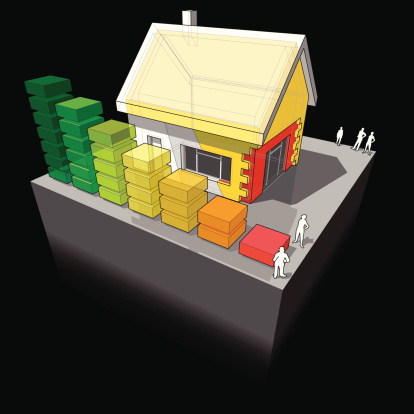People are always looking for ways to decrease their home energy costs. With costs seeming to rise each year, it’s no wonder why. However, what many people do not know is that insulation in the home plays a large role in heating and cooling costs.
Energy Exchange and Insulation
Most people utilize coasters because they know that if the temperature of the air is warmer than that of what is in the glass, the glass will sweat. This is a process of heat exchange, or simply put, the process of the water adapting to the temperature of the air in the room. The fluid is taking on, or gaining, the heat. On a warm day, this same process will happen to your home, as it takes on the heat from the outdoor conditions. Many people will turn on their air conditioner at this point in time.
Insulation is a barrier that helps stop or slow the exchange of the heat. When it is hot outside, it helps prevent the transfer of heat inside. When it is cold outside, it helps stop the transfer of heat from the inside of the home to the outside. Having the right amount of insulation in your home will limit energy transfer and improve your home’s energy efficiency, as well as lower your heating and cooling costs. Homebuilders insulate walls, ceilings, and attics. Additionally, HVAC ducts can be insulated to stop the transfer of energy transfer while hot or cold air is being delivered throughout the home.
A HVAC professional can come into your home and help determine where your home might be losing energy or need more insulation. This professional will check the efficiency of your HVAC system, and if there are any sealing or structure issues that are contributing to an increase your home’s energy bills. Your HVAC system may need upgraded or serviced, you may need to seal some drafts, or you may need to fix some leaky ducts. Whatever the case, the end result will be worth it.
Follow us for more information on your home’s HVAC system, home insulation, and general energy efficiency.

